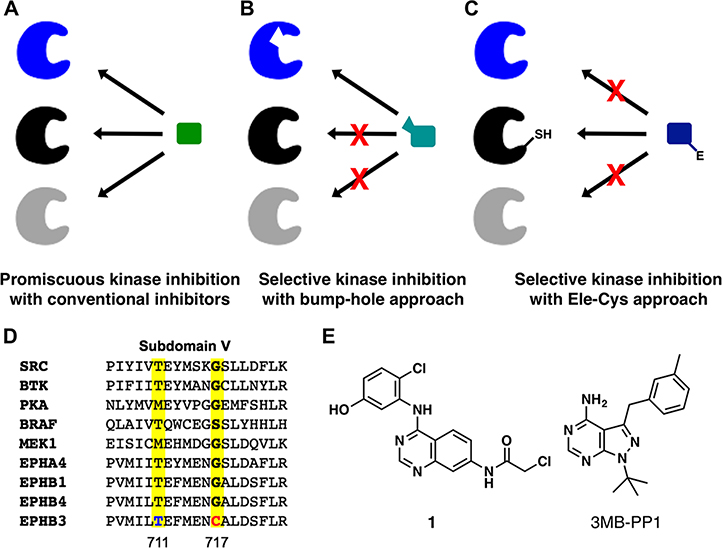Figure 1.
Chemical-genetic strategies to distinguish among highly homologous protein kinases. (A) Conventional methods have difficulty generating specific inhibitors for individual members in the highly homologous protein kinase family. (B) The “bump-hole” approach accomplishes specificity based on steric complementarity between an engineered kinase and an inhibitor analog. (C) The novel “Ele-Cys” approach relies on a covalent interaction between the nucleophilic thiol group in a kinase and an electrophile in a small-molecule inhibitor to achieve specificity. (D) A partial sequence alignment of nine protein kinases within the subdomain V with the gatekeeper position and the gatekeeper+6 position highlighted. (E) Chemical structure of compound 1 and 3MB-PP1.

